Sign up for my newsletter!
Do you want to be up to date with all the news?
Sign up to receive news about all yoga classes, trips and events organized by Gustavo Plaza.
For Gustavo Plaza, meeting Father Dávila marked the return to a path that began a long time ago. The path of Self Realization.
I came to meet Padrecito (as his disciples called him) at an early age. At the age of 15 I felt that the happiness offered by parties, fun, and couples was fleeting.
On the other hand, silent visions in my mind and heart subtly brought me closer to the yogis and their mystical path of spiritual realization. Any photo in a book, any image in a documentary attracted me deeply, inviting me to transcendence in a vital way.
That desire to know that invisible force, to connect with that essence of happiness and inner life, led me to meet Father Dávila.
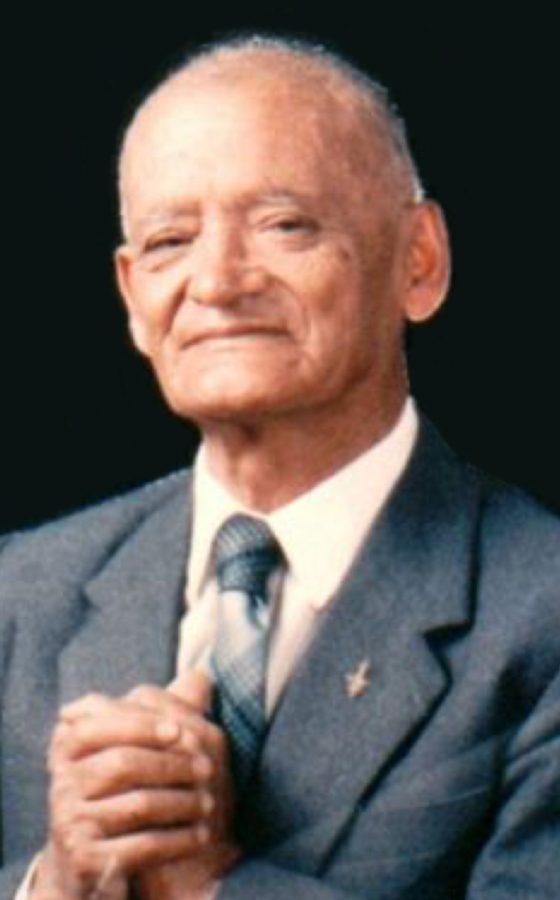

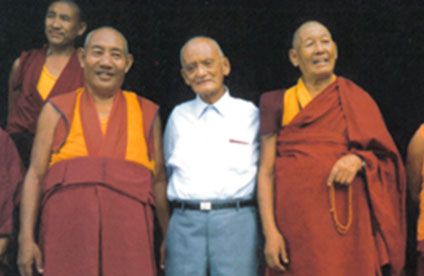
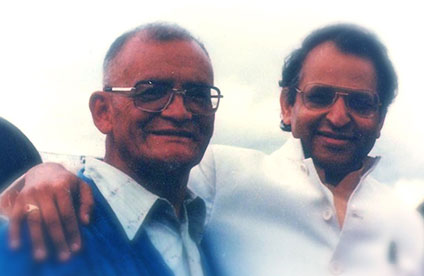
Father Dávila (1910-1999) was a Catholic priest, doctor in Sacred Theology and, at the same time, a yoga teacher, a tireless messenger of meditation as a way to contact God.
He was born in Patate (Tungurahua, Ecuador) on November 1, 1910 and was ordained a priest on June 29, 1934. He obtained his Doctorate in Dogmatic Theology at the Pontificia Universidad Javeriana de Bogotá, Colombia.
After a deep spiritual emptiness due to lack of internal experience of God, Father Dávila had a providential contact with a yogi from India who was visiting Ecuador.
This yogi, Pandit Sri Bhek Pati Sinha, follower of Mahatma Gandhi's message, introduced Father Dávila to the practices of the purest Hatha-Yoga and Radja-Yoga, and taught him the art of meditation, which would be the guide upon awakening from his new inner life. Thus, Father Dávila immersed himself in the experience and practice of the teachings of the Great Masters of the East, especially of Paramahansa Yogananda.
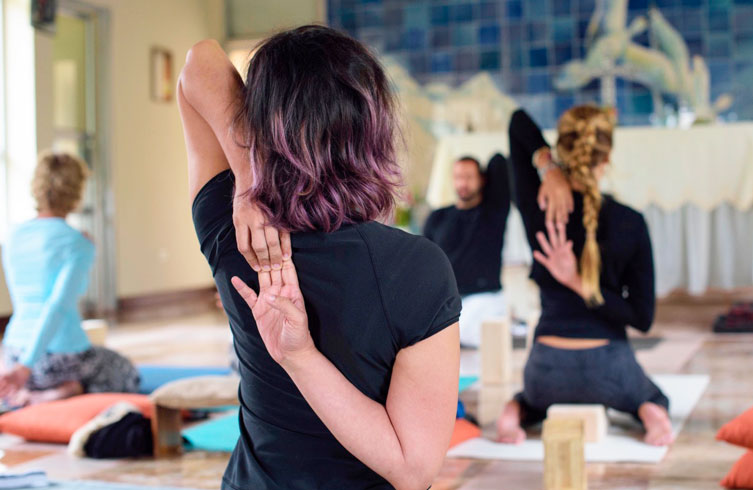
In 1972, after years of study, practice and constant sadhana, Father Dávila founded the Asociación Escuela de Auto-Realización (Association School for Self-Realization) as a means to share with his brothers and sisters this awakening to the inner life through Meditation.
His psychic development was remarkable, so much that many considered him a great mentalist. But it was his love for God, his inner silence, and his serenity that made him a true spiritual guide. As a priest he was always faithful to the Church, making his school of meditation recognized by it, but he never criticized another religion or dismissed people for being of another creed. He founded his school as a non-profit and non-sectarian entity that allowed anyone of any creed to approach the teachings of Yoga and meditation.
He published several books, such as Eternal Word, Guide to Infinity, The Keys to Thy Kingdom (Concentration and Meditation), My Sister Death, among others.
He was an extraordinary man, with a powerful presence and a unique steadfastness. His intellectual knowledge was secondary only to his spiritual experience. He was a true man of God.
From the moment I met him, Father Dávila had a magnetic effect on me. No matter how much I rejected the Catholic religion, his guidance was a source of rest for my frenzied mind and troubled spirit. Father Dávila shared talks and lectures with us and we practiced Yoga and meditation with him, but the training he gave me was always trough day to day experiences. The classical way in which the masters taught their disciples in the East.
Our teacher-disciple relationship developed mainly during retreats at the beach, or in the ashram in the mountains where he spent moments of internalization. As well as during the visits he made to our Yoga Center of the School of Self-Realization in Guayaquil (Ecuador). Additionally, I visited him in Quito, I wrote him letters and called on him on the phone. And of course, this relationship was present in his inner guidance in daily practice. He was always clear in pointing out that he was just an instrument, nothing more. That everything was God’s work. He never told me: "I am your teacher" or something similar, I never said to him: "I am your disciple." It was more of a natural relationship, without pressure, or complicated obligations other than trying to practice daily the methods that he had proven to obtain divine realization.
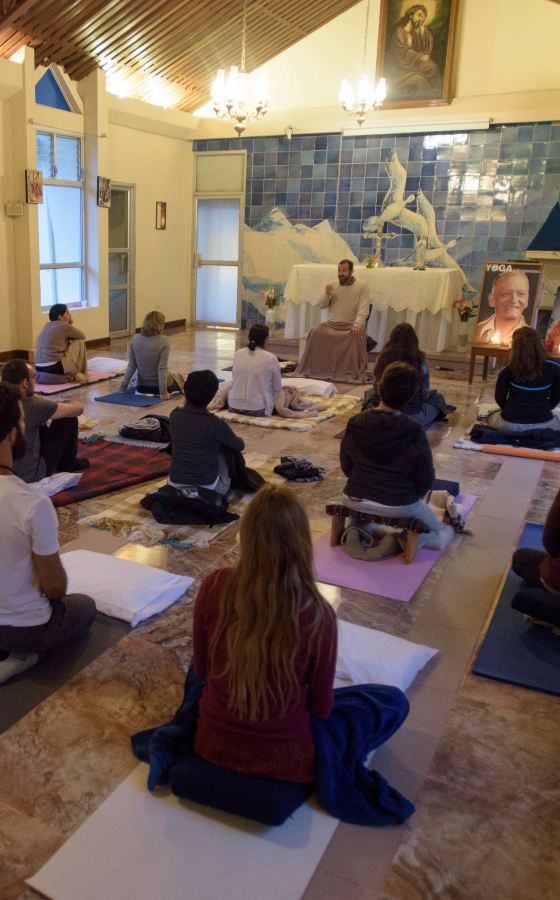
Was he enlightened? A realized being? For me, he was. But he had that enlightenment of a clear mind and a kind heart. That realization of being truly human, with his strengths and weaknesses, with his smile and his severity when necessary. Sincere, frank, humble, but strong, firm and of character. I never saw him stooped, not even in his old age. His example of sustained practice is, to this day, my source of inspiration. He never criticized my development or my spiritual practices, but my manners, customs, my dispersion, points of view, and above all, my ego, were crushed to rectify them and transform me into a decent human being.
In his last year of life, sitting at his home in Quito, he once told me: “Keep up your practices, keep going, don't worry. The day will come when your natural maturity has arrived and the fruits that you will have gathered will be so great that you will know how to value what you have received. Continue with your practices, that day will come and your maturity will bring that spiritual development that human beings seek.”
My eternal gratitude at the feet of Padrecito Dávila, his guide and light in my life will be something that I won’t be able to ever pay for.
More information about the School of Self-realization on the web: aea-yoga.org
Part of this text has been taken from an interview with Gustavo Plaza by Yogaenred.com / To read the full interview: click here
Do you want to be up to date with all the news?
Sign up to receive news about all yoga classes, trips and events organized by Gustavo Plaza.

YOGARAHASYA © 2020
Este sitio web utiliza cookies para garantizar que obtenga la mejor experiencia en nuestro sitio web. Al usar nuestro sitio acepta nuestros términos y condiciones.